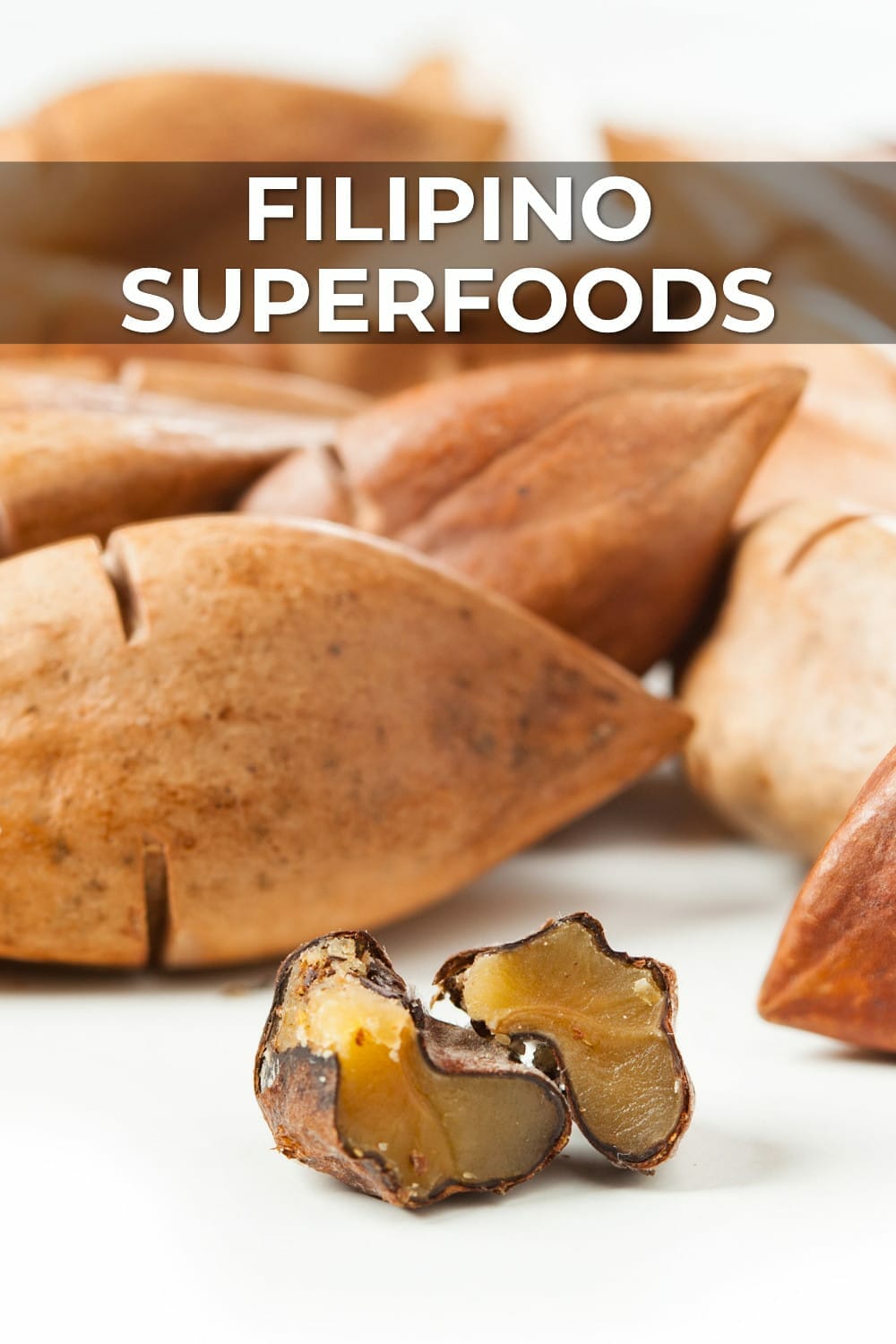Want to add more nutritionally-dense so-called superfoods into your diet but want a change from some the better-known foods like avocados, berries, and salmon? Or maybe you've just heard about the powerful properties that these foods offer and would like to get started. Whether you’ve recently discovered Filipino cuisine or love the flavor of Southeast Asian food, you will love this list we've compiled of some of the healthiest (and of course, tastiest) Filipino superfoods.
10 Filipino Superfoods to Incorporate Into Your Diet
Not only are most of these superfoods relatively easy to find at your local grocery store, but they are affordable and work well in a variety of Filipino dishes. Get the health benefits of more dietary vitamins and minerals, antioxidants and boost your immune system while enjoying delicious foods that seem too tasty to be good for you.
1. Mangosteen
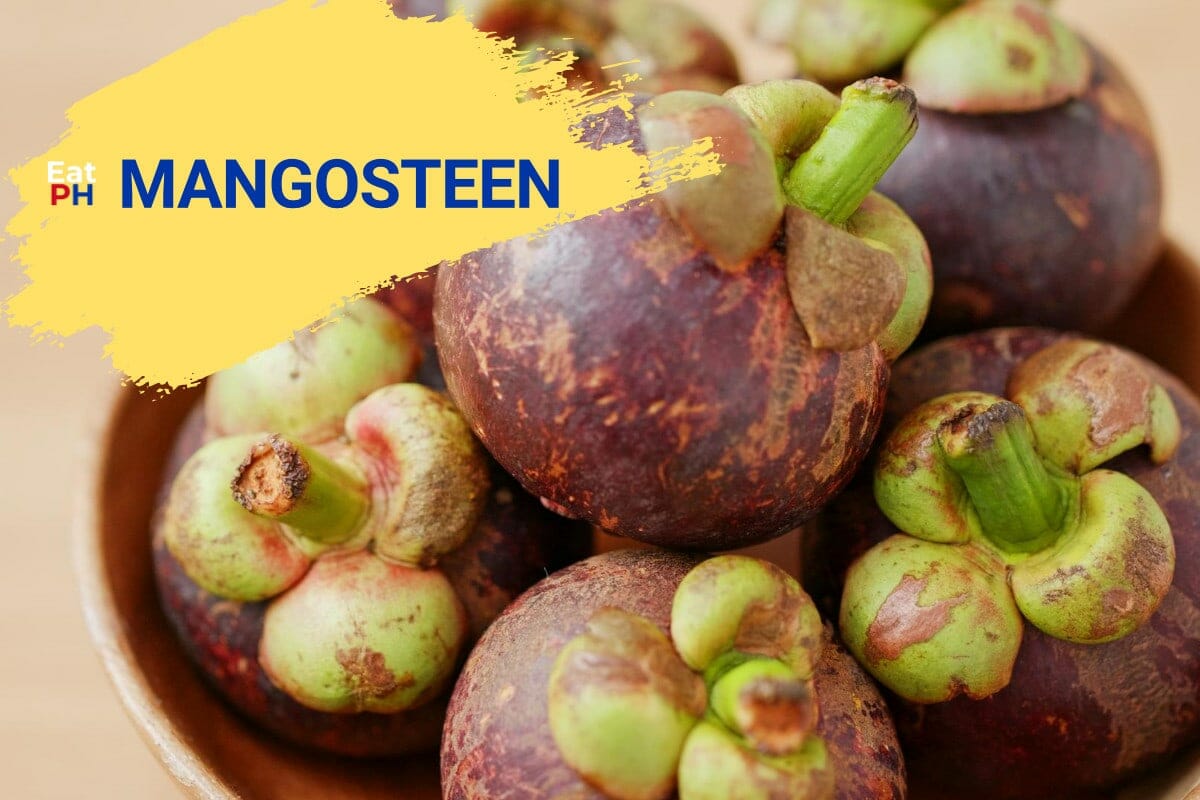
This tropical “Queen of Fruits” has a sweet-sour flavor and is referred to as purple mangosteen because of its color. Rich in Vitamin C, fiber, and other essential nutrients, the flesh of this tropical fruit has antiproliferative, anti-inflammatory, and anticancer effects that help to treat conditions like skin disorders and thrush. Mangosteen may also promote weight loss because of its low calorie and zero cholesterol content.
With a mouth-feel that’s often described as ice cream and an aroma of caramel and butter, this is a versatile fruit. Some recipes utilize the leaves, and roasting or boiling the seeds is another popular method of preparing it.
While some people prefer to consume the fruit in capsule form, juice or tea, this unique-looking fruit with a deep purple rind and white flesh is worth exploring in its natural form.
How to use it: As the main ingredient of jam and wild juice
2. Kulitis
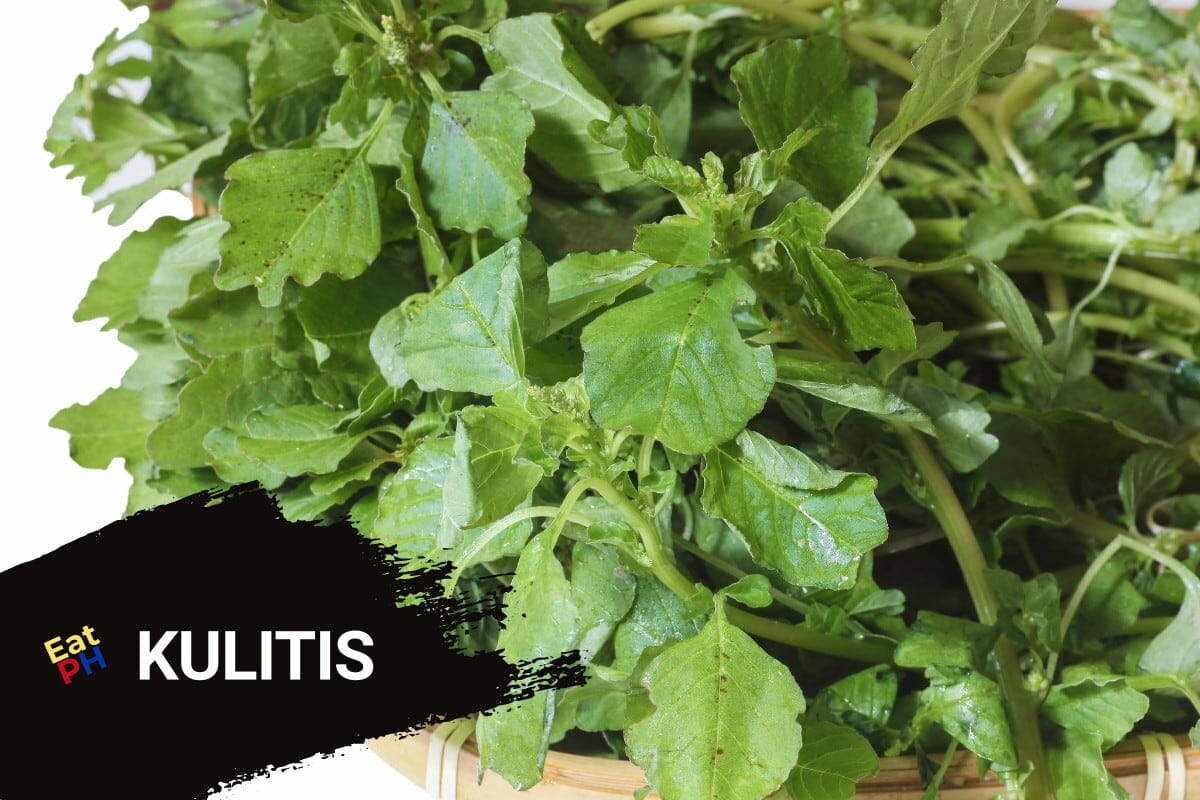
Kulitis, also known as Amaranth or Chinese Spinach, is one of the most nutritious vegetables in the Philippines. Depending on the part of the plant you consume, this superfood may help maintain healthy cholesterol and blood pressure. Some studies suggest that Kulitis also benefits people with diabetes, anemia, and cancer.
Since the protein content of Kulitis seeds is higher than other grains like soybeans, it’s an excellent option for plant-based diets. While Kulitis is often used as a substitute for the green leafy leaves of spinach in salads and soups, a fun way to eat it is popping the grain just like popcorn. You can also grind the roasted grains into flour.
Recipe ideas: Quick-fry Garlic Kulitis (spinach), Spinach in Coconut Milk
3. Malunggay

When it comes to health benefits, Malunggay is perhaps the most popular of all Filipino superfoods. The plant is also known as Moringa, which comes from Moringa Oleifera, or the “Miracle Tree.” Virtually everything from the pods, leaves, seeds, and roots of the tree is edible and rich in nutrients.
Moringa leaves contain about seven times more Vitamin C than an orange and four times more calcium than milk. It also has three times as much iron as spinach and potassium in bananas. When used in the right dosage, Moringa is a reliable, natural, and safe anticancer agent. It also helps people with low sugar levels and can help combat high blood pressure.
One serving of moringa leaves provides your daily zinc requirement to synthesis DNA and RNA and grow sperm cells.
Dried and fresh pods are often added to rice and noodle dishes and taste similar to green beans. Not only does this superfood grow quickly and withstand drought-like conditions, but the seeds are often used to purify water.
Recipes: Chicken and Papaya Soup (Tinola), Pork Ginataan
4. Mango

Mango is a sweet stone fruit with low fat and calorie content. Like many Filipino superfoods, mangoes don't contain cholesterol. One mango slice gives you 13% of your daily Vitamin A requirement. This serving also accounts for 80% and 66% of the daily Vitamin C requirement in men and women.
With more than 500 mango varieties in the world, mango is commonly called the “King of Fruits.” Whether you peel a mango and eat the fresh fruit or add to a smoothie, there are countless ways to enjoy the Philippines’ “Golden Fruit.”
Recipe ideas: mango float, ice cream, smoothie
5. Coconut

If you only know coconut for its sweet flavoring in sugary desserts, you might be surprised that it’s considered a superfood. Despite its appearance and name, coconut is considered a drupe, and every part of it useful, from foods to musical instruments.
Studies suggest that coconut plays a decisive role in preventing and treating Alzheimer's disease and may also be beneficial to people with heart disease.
While this Filipino superfood is a popular ingredient in many dishes like this Filipino pie, it may surprise you that coconuts grow in clusters of 15 or 20 and take about a year to mature.
Popular Dishes: Buko Pie, Biko Rice Cake
6. Pineapple

The Spanish introduced pineapples to the Philippines, and it has now become one of the most popular fruits in the Southeast Asian country.
Pineapples are packed with vitamins, enzymes, and have anti-inflammatory properties. They aid digestion and ease out arthritis. They also have the ability to delay cancer progression.
The most popular use of pineapple in Filipino cuisine is to make a sweetmeat called nata de pina. Whether you drink pineapple juice in a smoothie, eat some of it dried, mix the fresh fruit in a salad, or explore other Filipino recipes, you can’t go wrong with this superfood.
Where to use it: Nata de Pina, Sweet and Sour Sauce, Sweet and Sour Tilapia.
7. Breadfruit
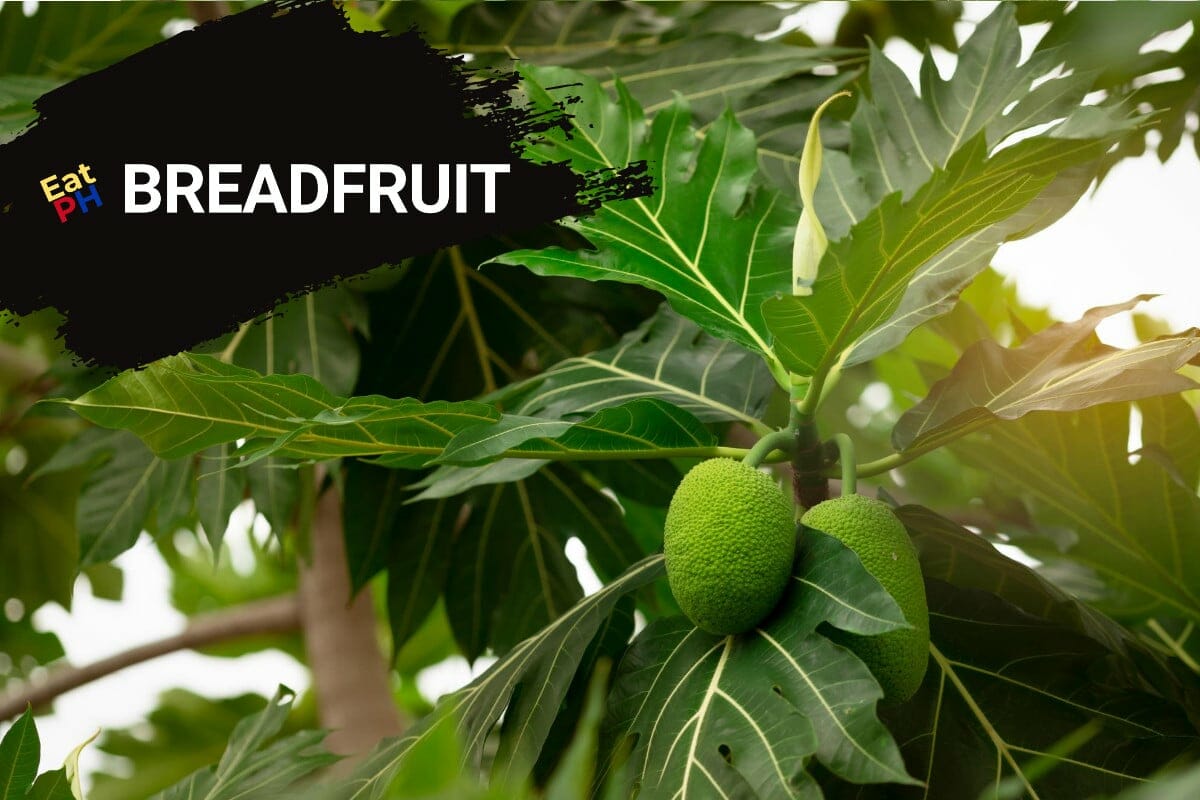
Despite its name, you’ll find this food in the produce aisle. This is another fruit with loads of health benefits. Unlike other Filipino superfoods, breadfruits aren't sweet, but the flesh is highly nutritious. It is a good source of Vitamin A and C and minerals like calcium, phosphorus, and potassium.
Breadfruits are quite large and are described as having a starchy taste. Breadfruit trees produce many fruits in a season that horticulturists tip that one breadfruit tree can feed a family of four for at least 50 years. The tree can yield up to 450 fruit pounds in one season. One of the more popular ways to eat this food is to make a pastry.
It's likely that breadfruit did not originate in the Philippines – the most likely origin is New Guinea and Malaysia – but it quickly established itself in the island nation.
Don’t worry if you don’t find seeds in your breadfruit. Some varieties don’t have any.
Recipe ideas: Breadfruit in Coconut Milk, Candied Dessert
8. Pili Nut
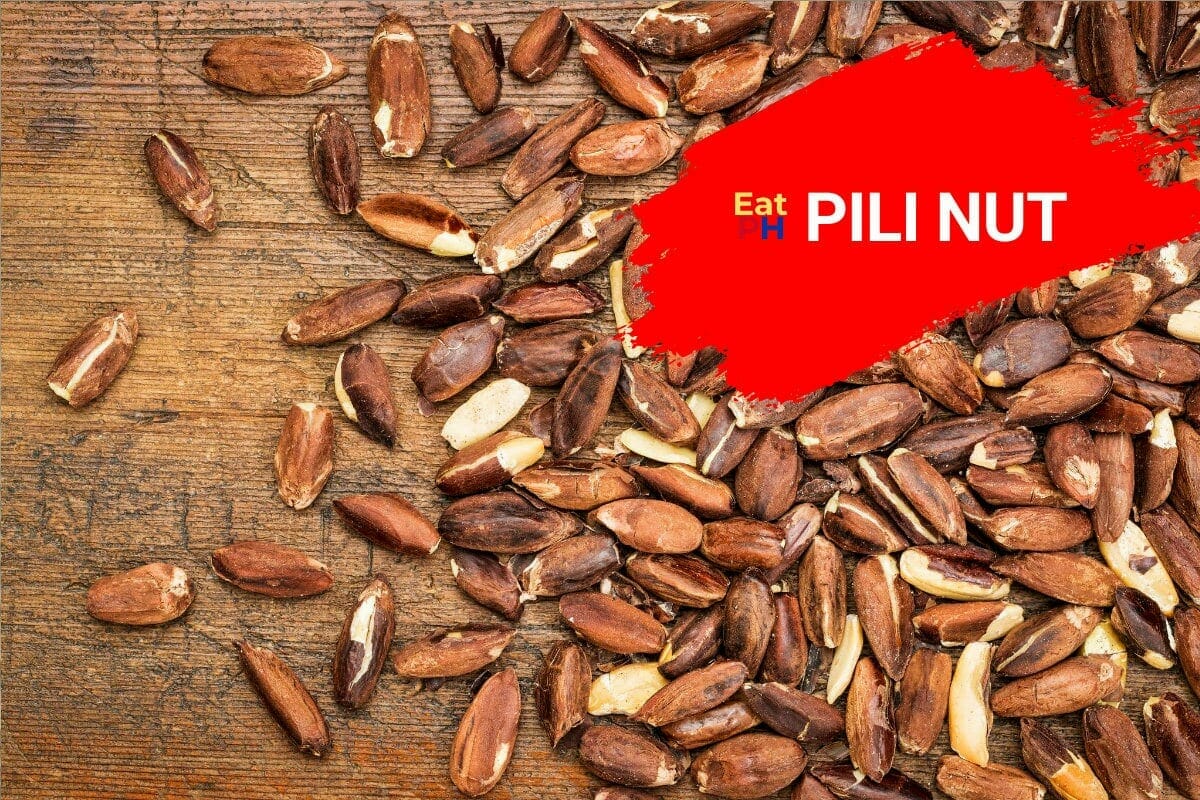
The Pili nut is a tear-shaped seed or kernel that many consider the most nutritious. It has a buttery almond flavor and a tough shell. Sometimes, even machines struggle to open one cup of these nuts successfully because the kernels are often wasted in the process.
Pili nuts aid skin growth, prevent heart conditions, and balance body cholesterol. The kernels of this superfood are the most popular part to eat. You can roast, salt, sugar-coat or process them into kernel oil. They taste like walnut and macadamia.
The nut is also a low-carb alternative to some other nuts like peanuts so it's ideal for anyone following the keto diet. The fatty acid profile is similar to that of one of the world's healthiest oils, olive oil. The seed also happens to be one of the few plant sources of complete proteins – protein that provides the amino acids required for building healthy bodies. Containing useful levels of zinc, iron, calcium and potassium and other B-vitamins (b1 and b6 in particular), and higher quantities of thiamin, manganese and magnesium (to help lower cholesterol), consuming pili is a great way to easily increase your vitamins and minerals count.
Aside from its kernel, you can boil pili nut pulp and eat it. No bit of this high nutritional value superfood goes to waste.
The Philippines is the only country that produces and processes pili nuts or other pili-based byproducts.
How to use it: Pili Nut Cake, pili nut salad, brownies
9. Papaya

Often referred to as the “Fruit of Angels,” this juicy superfood is known to boost immune systems and help eye conditions because it is rich in Vitamin A. In addition, it has a high Vitamin C content and several antioxidants that improve your heart health.
Papaya has soft insides, tastes similar to melons, and its flesh is the most desirable part. Papaya, which is also known as the pawpaw, has medicinal value in its ripe and unripe form. You might find it interesting to know that beta carotene (β-carotene) and lycopene are more bioavailable from papaya than from tomato and carrot in humans.
Another food that is not native to the Philippines but has thrived in the tropical climate. The most likely origin of the papaya tree is Mexico, from where it was transported to the Philippines by the Spanish.
Filipino papaya recipes: Tinola, Atchara, Ginisang Papaya.
10. Turmeric

Turmeric is a plant that belongs to the ginger family and is native to tropical Southeast Asia. In Filipino cuisine, it’s a common spice and an important ingredient in curry that gives the powder its flavor and yellow color.
Turmeric is used as a dietary supplement and herbal medicine for digestive disorders, allergies, and liver diseases or can be made into a paste for treating skin conditions.
From ice cream, baked products, and beverages, adding less than a teaspoon a day to all your foods may prove beneficial.
Where to use it: Adobo, Turmeric Arroz Caldo
Whether you’re a fan of Filipino food or want to expand your daily dose of superfoods, any of our top 10 Filipino superfoods can boost your health and add flavor to any meal.
Frequently Asked Questions
What are the healthiest vegetables in the Philippines?
Generally speaking, the healthiest vegetables in the Philippines are amaranth, malunggay, bell peppers, sweet potato, butternut squash, chard, and Brussel sprouts.
Which Filipino foods are rich in antioxidants?
Any of the foods on this list are high in antioxidants but the highest levels are found in mangosteen, eggplant, durian, bitter gourd, papaya, turmeric, and water spinach.
Is Filipino food healthy?
As with any cuisine, there are good and bad aspects. Filipino food is healthy if you choose vegetables, low-sugar fruits, and high-quality meats as the main elements of your meals. White rice and bread are high in calories and low in nutrients so try to avoid eating too much of these common Filipino food elements.
Which Filipino fruits are high in protein?
Common Filipino fruits with the highest protein content include guava, banana, and Jackfruit/langka.
What are some typical Filipino low-calorie dishes?
Low-calorie foods in the Philippines include chicken liver adobo, chicken tinola, Adobong Manok, pork with bitter gourd, arroz caldo, beef sinigang, banana lumpia and chicken lumpia, and Filipino Pork Menudo.
